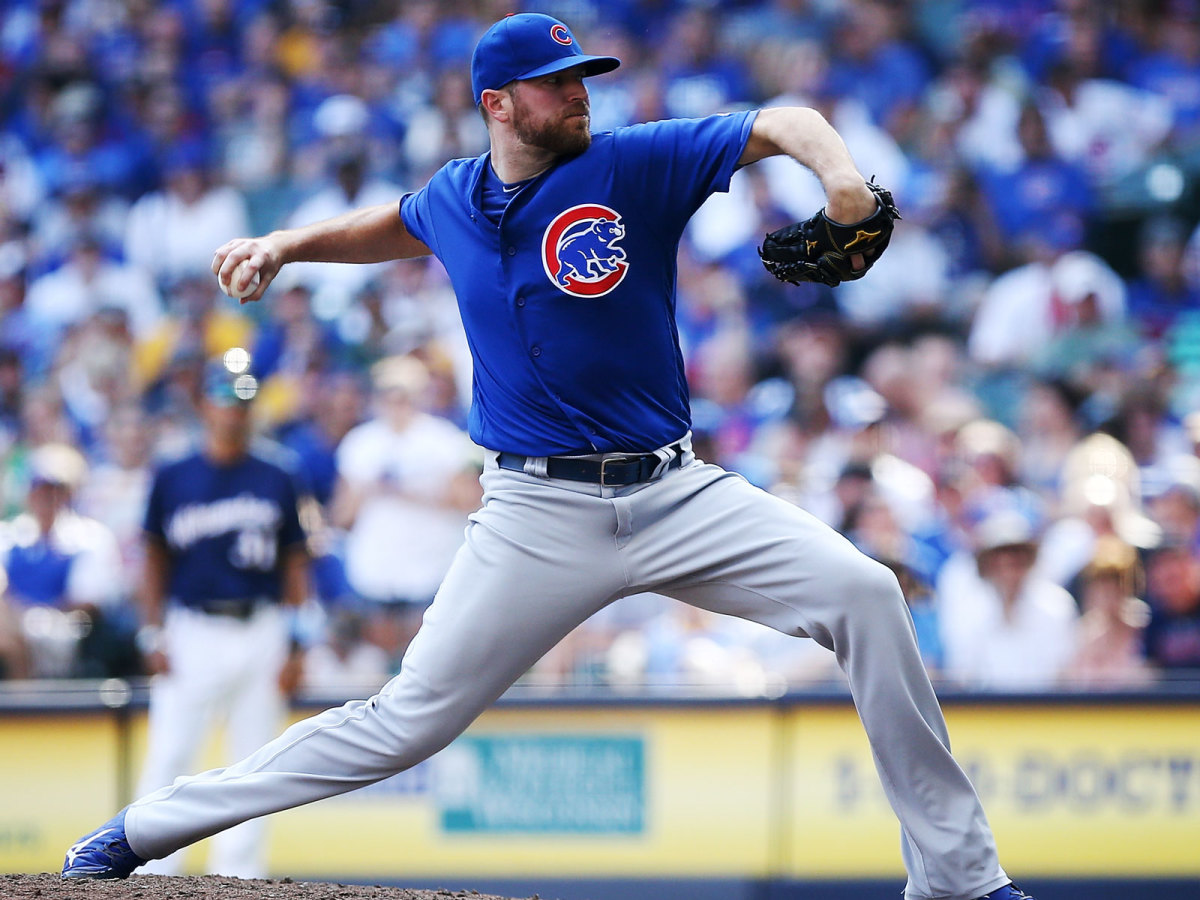Will New Rockies Closer Wade Davis Be This Year's Fantasy Reliever to Avoid?

Certain player types emerge every February and March as fantasy baseball owners prepare for their drafts and auctions. The specific players who fill those roles change, but the roles themselves carry over from year to year. Identifying the players who fit each archetype before you sit down to build your team can help you find hidden value and avoid impending busts. We’ll take a look at the 10 most identifiable, enduring archetypes in our Player Profile series. In this edition, we consider The Ticking Time Bomb in the Bullpen: Wade Davis
No position in fantasy baseball experiences more turnover from year to year than closer. There are high-profile busts at the position every season. Last year, Mark Melancon and Seung Hwan Oh were both selected among the top five closers in a typical draft. Both were out of the job by July. In 2016, Trevor Rosenthal and Jonathan Papelbon let down owners who spent mid-round picks on them, expecting to have an anchor in the bullpen. The year before that, Steve Cishek bombed, posting a 3.58 ERA, 1.48 WHIP and just four saves after being the 10th closer off the board in a typical draft. Greg Holland, the No. 3 closer by ADP in 2015, saved 32 games, but his ERA ballooned to 3.82, his WHIP jumped to 1.46, and his strikeout rate fell to 25.4%, a dip of 12 percentage points from the previous season.
It’s a guarantee that at least one high-priced closer will go bust in 2018, and fantasy owners would be wise to study the factors at play to try to determine which one has the best chance to suffer the ignominy. With all the data we have at hand, the bet here is on Wade Davis.
Davis was excellent in his lone season with the Cubs, making the All-Star team for the third consecutive year. He amassed a 2.30 ERA, 1.14 WHIP, 32 saves and 79 strikeouts in 58 2/3 innings. The Cubs almost certainly would not have made their third straight NLCS without Davis, and yet, the reasons why Davis is such a risky investment in fantasy leagues this season were on display in last year’s postseason. Davis pitched 6 1/3 innings in series against the Nationals and Dodgers. He allowed three runs on five hits, including two homers, striking out eight but walking six. Davis has been one of the best relievers in the majors the last three years. I’m not basing a bust call on him on a 6 1/3-inning sample. The postseason, however, laid bare issues that had plagued Davis for most of the second half of last season.
Davis was nearly unhittable in 2017 before the All-Star break. He posted a 1.80 ERA and 1.00 WHIP with 43 strikeouts against 12 walks in 30 innings before making what, in the recent term, has become his annual trip to the midsummer classic. Hitters managed just a .168/.261/.245 slash against him. He had a 35.8 strikeout rate and 10% walk rate, and he surrendered just one homer, translating to a 4.5% HR/FB ratio.

Everything changed after the All-Star break. Davis’s ERA jumped to 2.83, and his WHIP climbed to 1.29. He struck out 36 batters and walked 16 in 28 2/3 innings, with strikeout and walk rates of 29.5% and 13.1%, respectively. He gave up five homers, with his HR/FB ratio spiking to 17.9%. Add it up, and he had an unsightly 4.80 FIP and 4.27 xFIP. Davis mostly got the job done in terms of converting saves, which kept his fantasy value afloat and masked a lot of his deficiencies, but eliminate one of the most overrated stats in all of sports from the equation, and it’s easy to see that Davis was a bad reliever after the All-Star break last season. The postseason blowup had been festering for months.
Davis is now entering his age-32 season, and he dealt with a serious forearm injury in 2016. As his performance declined last season, so, too, did his velocity. Davis primarily throws a four-seam fastball, cutter and curveball. The four-seamer and the cutter both lost about a mile per hour of velocity from the previous season. From 2014 through 2016, Davis’s four-seamer never had an average velocity slower than 95.4 mph. The cutter was never worse than 92.2 mph. Those pitches checked in at 94.7 mph and 90.6 mph, respectively, last year. Both were a touch lower than that after the All-Star break, as well.
SI's Top 100 MLB Players of 2018: Nos. 50–21
That’s a big problem for Davis. While his curve can be devastating, he relies on the cutter as an out pitch. He needs it to get whiffs and, to his credit, it did last year, to the tune of an 18.3% whiff rate. The success of a cutter is more about movement, location and deception than it is about velocity, but, at the same time, there’s less margin for error at 90 mph than there is at 92 or 93 mph. If his velocity dip last year was the beginning of a trend, his previous whiff rates may be a thing of the past. What’s more, if Davis’s issues with walks and homers from a year ago dog him again in 2018, this time with half of his games coming at Coors Field, he’s going to pay for them more dearly than he did as a member of the Cubs.
Mitigating risk is a crucial element to succeeding in fantasy leagues. There’s no riskier high-priced closer on the board than Davis. He is the Ticking Time Bomb in the Bullpen, and you’re likely better off if you take him entirely off your draft board.
